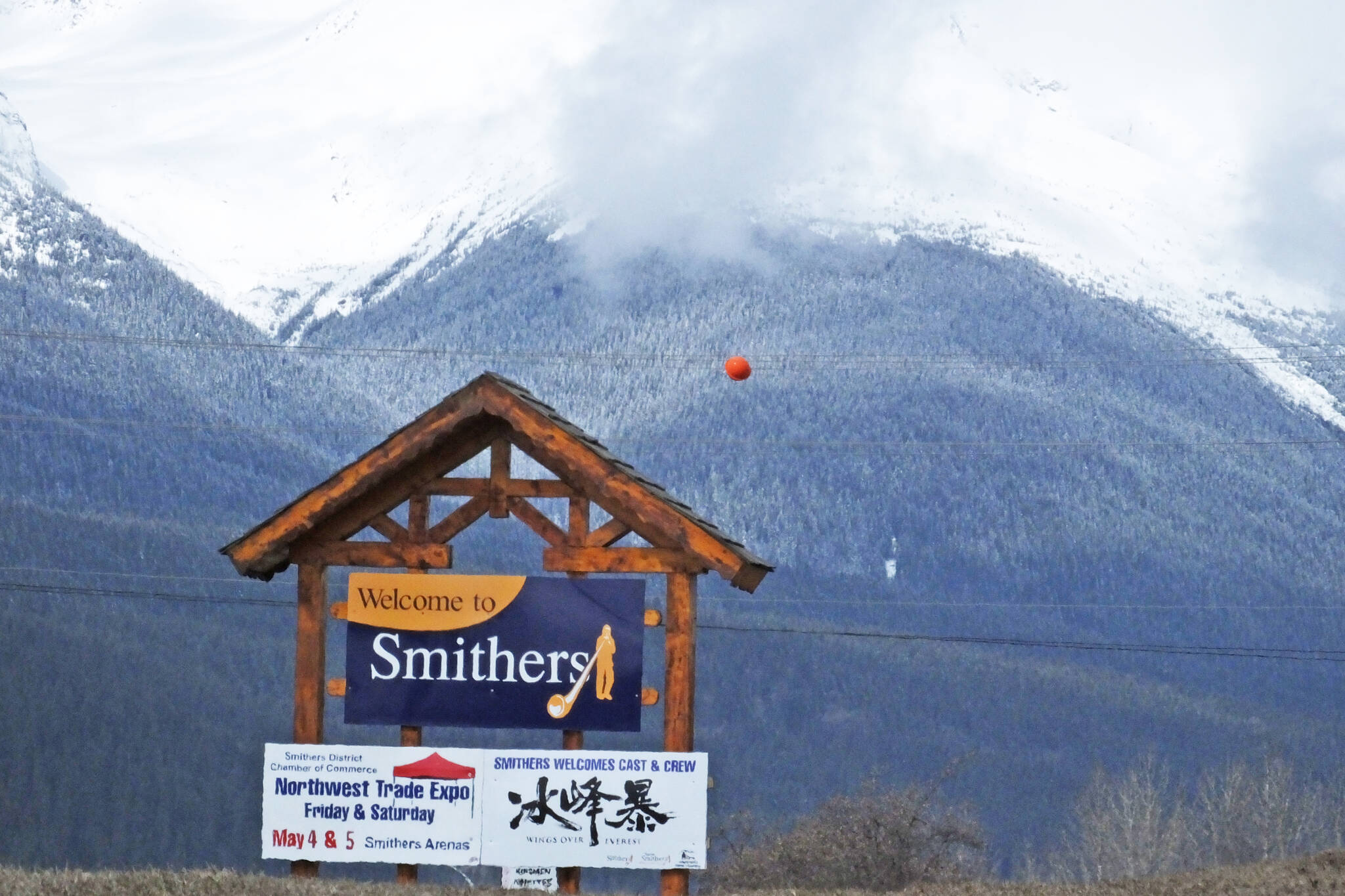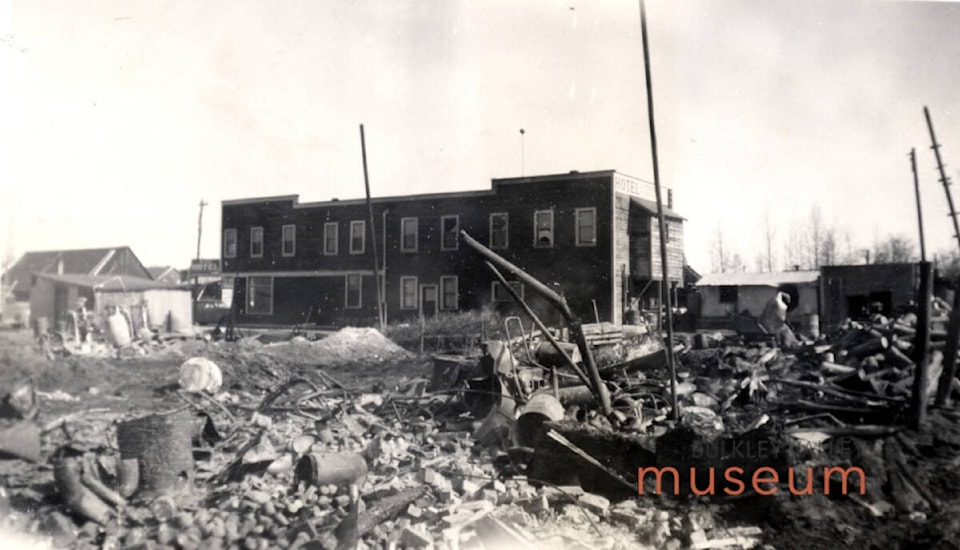One of the most popular activities for tourists to our nation’s capital is touring the Parliament Buildings.
But it is surprising how many native Ottawans have never done so.
We tend to take for granted the places we live.
For example, most people in Smithers can probably tell you that the town was named after Sir Alfred Smithers, who had something to do with the Grand Trunk Pacific Railway; that the location wasn’t the first choice for a divisional point between Prince George and Prince Rupert; and that the town was built on a swamp.
Oh yes, and that the egg carton was invented here.
But how much do most of us really know about the history of the town in which we live?
Aside from his association with the GTP, who was Alfred Smithers?
Smithers was born in Knockholt, England in 1850, the son of a William Henry Smithers, a prominent official with the Bank of England.
“The paternal influence must have affected young Alfred strongly as he joined the London Stock Exchange at the age of 23 and further established himself in the world of finance as a partner in the firm of Ackroyd and Smithers,” wrote Lynn Shervill.
He first came to Canada in 1896 as a director with the GTP and evetually became chairman, a position he held until the Canadian Government nationalized the railway and several others under the CN banner, starting in 1919.
The Smithers legacy can still be seen in other place names around the valley. There is Alfred Avenue in Smithers, of course, but also Knockholt, a small stop on the CNR east of Houston.
It was around the time Canada nationalized GTP, in 1921, that Smithers became the first incorporated village in B.C.
Founded in 1913, when the railway cleared the first 100 acres of the town site, as a divisional point between Prince George and Prince Rupert, the village quickly grew reaching a population of 700, by 1914. The war in Europe took its toll, though, halving that by the end 1918.
From there, the population fluctuated significantly until the 1950s despite initial optimism that 5,000 people would be living here by 1915.
The usual suspects, such as the Great Depression, played their role in instability of fledgling village, but fire also played a major role in Smithers’ start and stop development and eventual success and growth Post-second World War.
Early on, a major fire in Telkwa contributed to establishing Smithers as a regional centre. When Smithers was still basically a swamp in 1914, Telkwa was a growing concern with multiple businesses, but a devestating fire destroyed 13 downtown buildings and many of the businesses relocated 14 kilometres up the road.
Throughout the 1920s and ’30s, fire was a perennial problem prompting calls for a municipal water system. The village never pulled the trigger, though, until a string of downtown fires struck in the mid-1940s.
“Two were particularly awful: in May 1944 a gas heated coffee maker in the Blue Goose Café started a fire that destroyed the cafe, as well as Anger’s Tailor Shop, Noel Dry Goods, Day’s Bakery, and Grey’s Jewellery Store, and damaged five other buildings, with an estimated loss of $75,000,” wrote Kira Westby, curator of the Bulkley Valley, in a bio of Harvey Davies, chairman of the village commissioners. “Then, less than a year later, in April 1945 another fire destroyed seven businesses, including the Day Bakery for a second time.”
Despite the need, borrowing the $106,000 (the equivalent of $1.46 million today) was controversial and it was put to a referendum.
It passed, giving Smithers perhaps its most significant piece of infrastructure since the railroad itself.
As modern-day Smithers emerges from the global COVID-19 pandemic, it is interesting to note that this is not the first time the town has had to deal with an outbreak of a deadly virus.
The Spanish Flu came to the valley in 2018, likely borne by passengers on the railway. As in 1914, when Telkwa still outranked Smithers as a thriving community, Hazelton was more of a regional centre than Smithers in 1918.
Smithers had no hospital at the time, but the government agent quickly took action converting the Smithers school, located on King Street near where Muheim Elementary’s new playground now stands into an emergency hospital.
“Within twenty-four hours Mr. Hoskins [Stephen], ably assisted by Mr. Lang… Mr. J. S. Kennedy, Mr. C.G. Harvey, and a number of others, had the hospital in good working order,” reported The Interior News.
The public health measures taken at the time, were similar to the current experience.
Dr. Horace Wrinch, who was based in Hazelton, where there was a hospital, was the only doctor between Terrace and Vanderhoof and was responsible for containing the outbreak.
“Wrinch implemented bans on public gatherings and social events, including dances, and cancelled school classes and church services,” a virtual Bulkley Valley Museum exhibit. “Even the local pool halls were ordered closed. The Interior News considered the situation “well handled” by Dr. Wrinch and the community, but daily life in Smithers was effectively on hold for the time being.”
Recent controversy over old growth logging deferrals has underscored just how important forestry has been to the development of Smithers, but mining has also been a significant factor. These days, of course, Smithers in well-known for being a support centre for the mining and mineral exploration industries.
In fact, a recent report by the Association for mineral exploration indicated mining and exploration companies spent more money in Smithers in 2020 (the latest year for which statistics are available) than any other municipality in the province.
Generally, though, the actual industry activity Smithers supports is in remote location. But there was a time, mining was actively conducted much closer to home.
The Duthie Mine, located on the south slope (other side) of Hudson Bay Mountain was an underground silver-lead-zinc mine that operated off-and-on from the early 1900s until it was shut down in the 1950s.
During its heydey in the 1920s, it produced approximately $325,000 ounces of silver annually, employed up to 100 people and was a big enough deal that the site even had its own schoolhouse.
It takes its name from the American industrialist John Frederick Duthie who bought control of the claims originally staked by Jack and Jake Ashman.
The mine shut down temporarily in 1924 and 1925 and provides an interesting, albeit brief connection between Smithers and the famous American tycoon Guggenheim and Rockefeller families.
A panel from a BVM mining exhibit explains:
“By the end of 1923, Duthie had recouped his purchase expenses and sold a controlling interest in the mine to the Federal Mining and Smelting company, a division of the U.S. Guggenheim empire and connections with the Rockefeller family. While the mine continued to produce into 1924, a dispute between Duthie and the Guggenheims led to the shutdown of the mine and 80 people out of work.”
Duthie regained control, however, and by 1926 the mine ranked ninth in production of all mines shipping to the smelter at Trail, B.C.
Falling mineral prices due to the Great Depression would shut it down again during the 1930s.
Duthie is now owned by Silver Standard, who operated it again from 1984-1988.
Recently, the company won an award for Outstanding Reclamation Achievement by the Technical and Research Committee on Reclamation from the Mining Association of British Columbia and the British Columbia Ministry of Energy and Mines.
Next week: An Our Town about our town: Part II: Changing demographics and sensibilities

